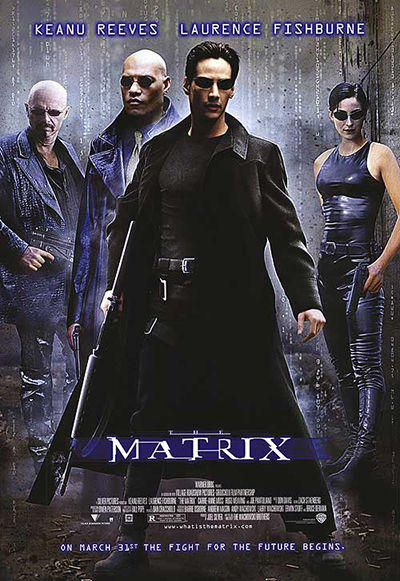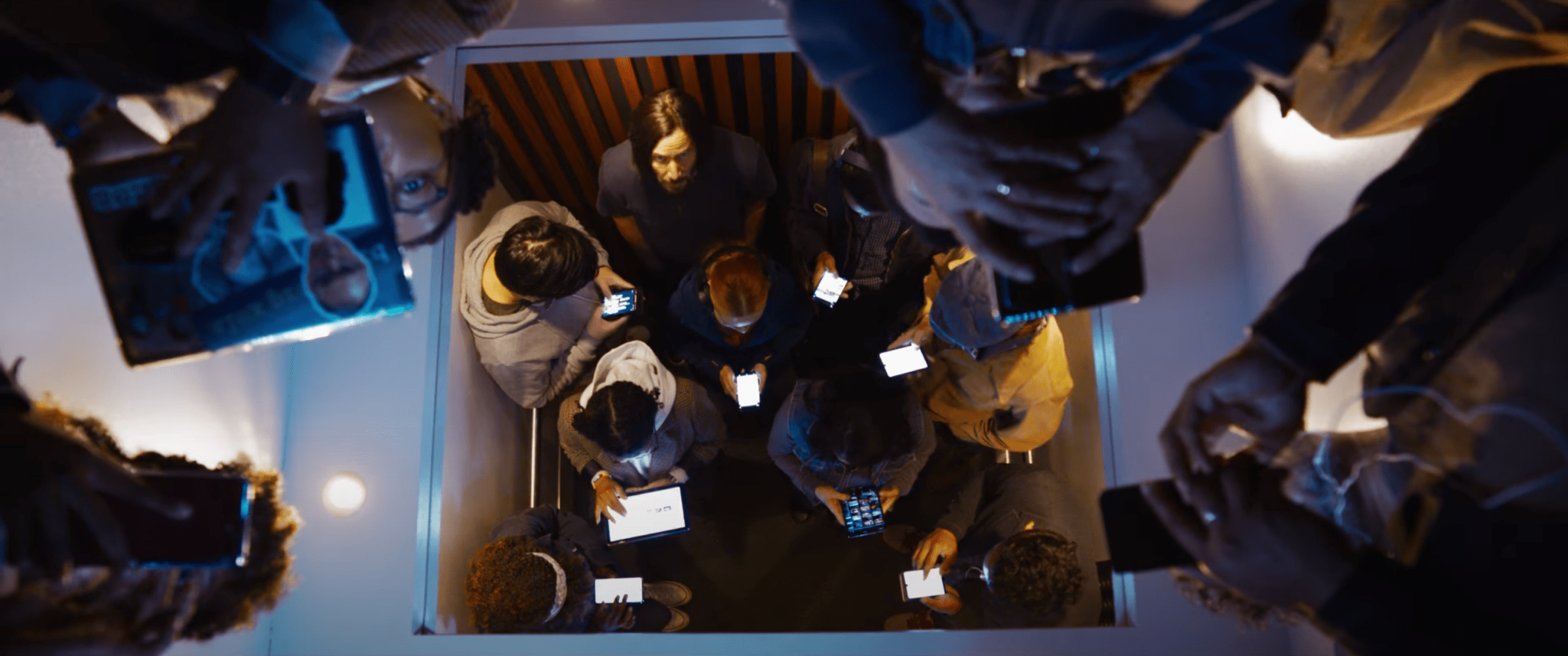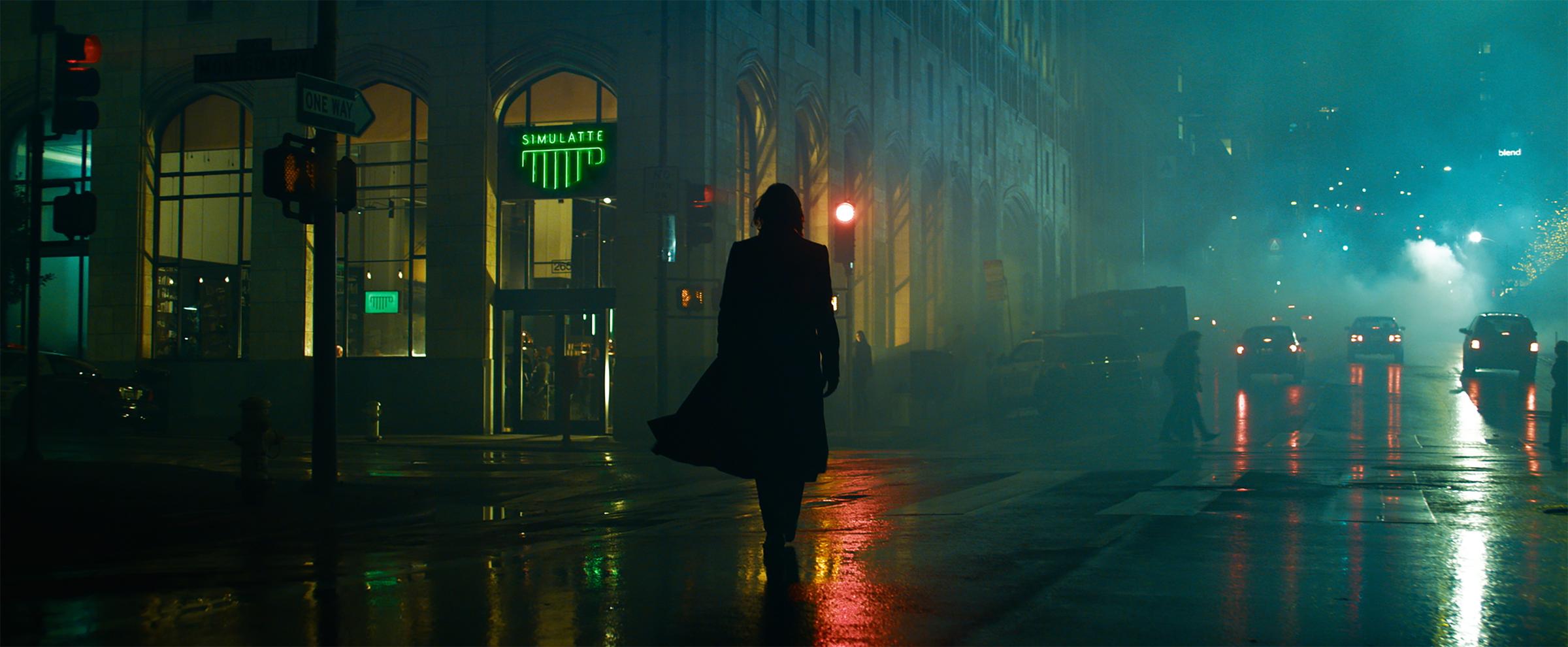It’s been almost two decades since the last Matrix movie, but now moviegoers are getting prepared to plug back in and once more question the nature of their reality. The Matrix Resurrections, the fourth live-action movie in the landmark action series, hits theaters and HBO Max on Dec. 22 and is directed by Lana Wachowski, one half of the sibling filmmaking team (along with Lilly Wachowski) behind the first three movies. The movie brings back original stars like Keanu Reeves and Carrie-Anne Moss, along with plenty of new faces like Yahya Abdul-Mateen II, Neil Patrick Harris, Jonathan Groff and Jessica Henwick.
Based on the trailers, the film looks to be a trippy, somewhat meta reexamination of the original trilogy. And it’s likely it will have plenty of new commentary about the symbolism with which the original movies have been imbued—both by people on the Internet and by the filmmakers themselves—in the decades since their release. That original trilogy came out a long time ago, though, so you’d be forgiven for needing a refresher on what went down in those movies, as well as a quick primer on any other Matrix-related materials that might be handy to know before seeing Resurrections. To paraphrase Agent Smith, what good is a sequel… if you are unable to remember what happened?
What happened in the original Matrix movie?

The premise of the Matrix is actually not that complicated, though the first two sequels do add some twists and layers. The titular Matrix is what we humans think is our “reality.” The truth, in the movies, is that we are all living in a computer simulation. Humanity lost a war with the very machines we created long ago. Our last-ditch effort to blot out the sun to deprive the machines of solar power didn’t save us, but it did force the machines to keep humanity around and harvest their bodies for power while keeping our minds active inside the Matrix. (Never mind that human bodies require power and don’t just generate it so they can’t be used as a battery. Suspend your disbelief.)
We get a brief recounting of this history in the first Matrix, released in 1999, but to see it play out properly you can watch The Second Renaissance, a two-part segment in The Animatrix, an anthology film produced by the Wachowskis that came out ahead of 2003’s Reloaded. The rest of the Animatrix is fine, but The Second Renaissance is extremely good, extremely upsetting, and adds a lot of context to the franchise. It, along with all the other movies, is streaming on HBO Max.
The first movie introduces Neo (Reeves), a seemingly normal guy with a skill for hacking. He encounters Trinity (Moss) and Morpheus (Laurence Fishburne), figures who are renowned cybercriminals in the world of the Matrix but who are really members of the human resistance against the Machines in the real world. They offer him a Red Pill that frees Neo from the Matrix. Once in the real world, where they operate from a cool ship called the Nebuchadnezzar (one of many resistance ships, each with its own crew), Morpheus explains the nature of reality.

They are part of a group of resistance fighters who are trying to free humanity from the Matrix and the Machines’ clutches. To do this, they can log back into the Matrix and use their knowledge that it’s all just a simulation to “break” the program’s rules, becoming super strong, fast or agile. And, they can simply download information into their brains, prompting Neo to announce that he “knows Kung-Fu.” While inside the Matrix, the number one thing they need to watch out for are Agents—programs that exist to hunt down anomalies or invaders such as themselves. One of them, Agent Smith (Hugo Weaving), forms a particular rivalry with Neo.
Morpheus believes that Neo is “The One,” a person prophesied by The Oracle (a helpful humanlike computer program within the Matrix played by Gloria Foster in the first two movies and Mary Alice in the third) who will be able to end the war against the machines once and for all. Neo is able to live up to the prophecy, saving Morpheus’ life and defeating Agent Smith—the first time anybody has ever gone toe-to-toe with an Agent and lived.
What happened in the first two Matrix sequels?

In The Matrix: Reloaded, Neo has become even more powerful, but things are looking grim, both in the real world and inside the Matrix. In the real world, the Machine army is bearing down on Zion, the only “real” human city, located deep, deep underground. Their numbers are such that it seems almost impossible for humanity to fight them off. Meanwhile, in the Matrix, we learn that Agent Smith was not actually destroyed, but he has been changed. No longer an Agent serving the Machine’s agenda, Smith has gone rogue and has become a self-replicating virus who is turning the inhabitants of the Matrix into copies of himself. In an effort to fulfill the prophecy before the Machine army wipes out Humanity, Neo eventually meets a program known as the Architect (Helmut Bakaitis), who reveals the horrible truth: Neo isn’t the first One. He’s the sixth, and the entire prophecy is a sort of failsafe that allows the Machines to keep humans alive in the Matrix so long as they have the potential to reject its unreality. Neo’s role isn’t to end the war, it’s to start the cycle over again.
However, Neo refuses, instead opting to save Trinty’s life because he loves her more than he loves the idea of “saving” humanity—both in the Matrix and, in a way, in real life—by playing along with the Machines’ plan. The movie ends with the Machine army bearing down on Zion and Neo in a coma because he was able to stop some Machines from attacking them while still in the real world—something that shouldn’t be possible because he’s not plugged into the Matrix. However, he’s not alone. Smith managed to infect a Red-Pilled human serving on another ship before he logged out of the Matrix, meaning Neo’s mortal enemy is now in the real world and nobody has any idea.

The Matrix Revolutions, released later in 2003, begins with Neo trapped in a sort of limbo between the real world and the Matrix, though Morpheus and Trinity are able to free him. Once back in the real world, they split up. Neo believes he must travel to the Machines’ headquarters so off he goes, accompanied by Trinity. Morpheus and another ship of Red-Pilled humans (including Jada Pinkett Smith’s Niobe) need to rush back to Zion, as their mission in the previous film took them away from the city. They hope that their ship’s electronics-frying electromagnetic pulse can halt the Machine advance. There’s a pretty spectacular battle, but Morpheus and co. arrive just in time to defeat the Machines’ first wave. It’s only a temporary victory, as the humans are so worn out from the initial defense that a Machine victory seems imminent once they show up with reinforcements—unless Neo can pull off some sort of miracle.
Meanwhile, Neo and Trinity are attacked by Smith, who snuck aboard their ship. Neo is able to kill the flesh-and-blood Smith, but not before Smith blinds him with a gnarly electrical cable during their fight. Neo can still “see” the machines, though, as he’s somehow still tapped into their code. They make it to the Machine city despite heavy resistance, and Trinity tragically dies when their ship crash-lands. Despite the loss, Neo reaches the Machine leader and cuts a deal: Smith has taken over every single person and program inside the Matrix, meaning the Machine’s energy source is in danger. If Neo can defeat Smith, the Machines will stop their attack on Zion and forge a peace with humanity. Neo battles Smith but realizes he can’t beat him in a straight fight, and so he allows his nemesis to infect him, a seemingly fatal decision—and in doing so, gives the Machines the direct access they need to purge Smith, since Neo is logged into the Matrix through them.
Humanity is saved and the Machines say they’ll make good on their promise, sparing Zion and offering everybody the choice to leave the Matrix. Speaking with the Architect, the Oracle admits she helped orchestrate all this, taking a big gamble on Neo. Luckily, it worked out, and there’s the promise of an actual, lasting peace… Well, at least until The Matrix: Resurrections.
Where did le Leave off?

It’s a little hard to do a full table-setting for Resurrections because the nature of the Matrix—not to mention what little we know about the premise of the upcoming film—means things can be very different from what we remember and we’ll only know why when the movie explains it to us in due time. For instance, Trinity explicitly died in the real world in Revolutions, yet Moss is one of the stars of Reloaded. So, rather than speculate on how or why any characters are where they are in Resurrections, here’s a brief reminder of where we left off.
The machines and humanity have forged a peace. Zion will be allowed to continue to exist, and the humans still inside the Matrix will have the choice to exit its familiar confines for the real world. Whether this peace can last is another story—but such a peace probably wouldn’t offer much fodder for a 2.5-hour movie so it seems unlikely.
Trinity is dead. Neo is presumably dead, as he’s last seen allowing Smith to infect him before the Machine leader uses his plugged-in body as a conduit to purge Smith. Machines take his limp body offscreen, and what happens after that is unclear. Smith is dead, as far as we know, and Weaving isn’t returning to reprise the role. Saati, a young girl program who Neo met in the space between reality and the Matrix, is happily alive inside the Matrix with the Oracle. (Priyanka Chopra Jonas will play an older version of the character in the new movie.) Morpheus, who will appear in Resurrections where he’ll be played by Abdul-Mateen rather than Fishburne for reasons that will be revealed, was alive and well in Zion when the film trilogy ended.
We specify “when the film trilogy ended” because Morpheus actually died in a sequel video game that may or may not still be part of the series canon. In the early ‘00s, the Matrix franchise went all-in on the idea that you could have a multi-platform franchise, leading to things like The Animatrix, which featured segments that directly kicked off the events of Reloaded. The Matrix Online, a now-long-defunct online video game that came out in 2005, was the official continuation of the story. In the game, Morpheus becomes something of a terrorist leader who antagonizes the Machines because they haven’t returned Neo’s body to the humans despite the peace agreement. Morpheus is ultimately killed by a programmed assassin, and if there was more to his story we won’t know, as the game was canceled in 2009.
If—and this is a big if—the events of The Matrix Online are canon, it seems like a safe bet that Warner Bros. won’t make having played this comparatively niche video game a prerequisite to understanding what’s happening in their newest blockbuster. Whatever’s going on with Morpheus and his recasting will be explained within the runtime of Reloaded. That ethos should extend to pretty much all questions would-be viewers should have: Just have a decent memory of what happened in the first three movies and trust that Resurrections will answer all the mysteries that it has created.
How have things changed outside of the Matrix?

As mentioned earlier, it has been nearly two decades since the last Matrix movie, though that’s not for lack of trying. Warner Bros. repeatedly asked filmmakers Lana and Lilly Wachowski to make another entry in the profitable franchise, but the pair kept saying no. It wasn’t until much more recently when Lana Wachowski, prompted by grief, had an idea that actually made her want to revisit Neo and Trinity.
Lilly Wachowski declined an invitation to work on the fourth Matrix movie alongside her sister, making this the first film in the franchise—and the Wachowskis’ greater filmography—to have only one half of the sibling duo at the helm.
James Grebey is an entertainment journalist who edits features for SYFY WIRE, writes on occasion for Vulture, Polygon, GQ, Decider and more, and tweets dumb photoshopped jokes on Twitter, where he’s @jgrebes.
More Must-Reads from TIME
- Why Biden Dropped Out
- Ukraine’s Plan to Survive Trump
- The Rise of a New Kind of Parenting Guru
- The Chaos and Commotion of the RNC in Photos
- Why We All Have a Stake in Twisters’ Success
- 8 Eating Habits That Actually Improve Your Sleep
- Welcome to the Noah Lyles Olympics
- Get Our Paris Olympics Newsletter in Your Inbox
Contact us at letters@time.com